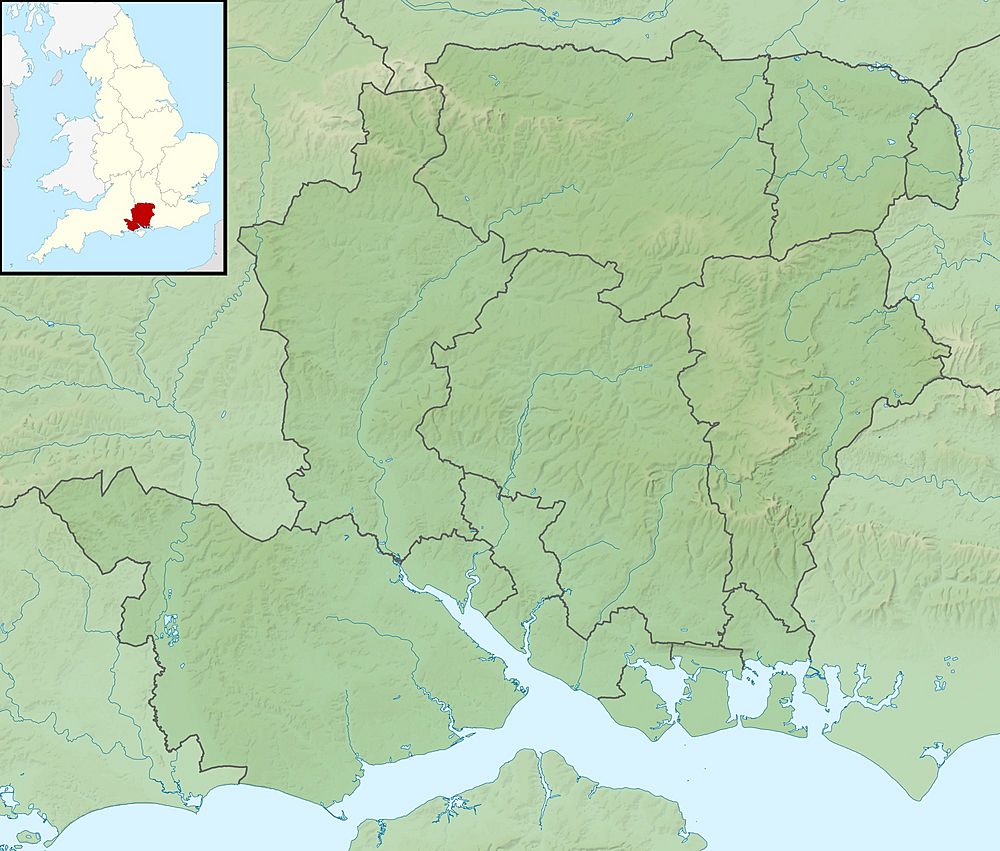River Slea, Hampshire facts for kids
Quick facts for kids River Slea |
|
|---|---|
|
|
|
| Country | England |
| County | Hampshire |
| District | East Hampshire |
| Towns | Sleaford, Bordon |
| Physical characteristics | |
| Main source | Kingsley Stream Kingsley Mill, Kingsley 72m 51°07′57″N 0°52′52″W / 51.1325°N 0.8811°W |
| 2nd source | Oakhanger Stream |
| River mouth | River Wey North of Brockford Bridge, far north fields of parish of Headley, Hampshire 62m 51°08′31″N 0°49′52″W / 51.1420°N 0.8310°W |
| Length | 6.2 km (3.9 mi) |
| Basin features | |
| Progression | Oxney Stream, River Slea, Wey (south branch), Wey, Thames, North Sea |
| River system | Wey catchment |
| Tributaries |
|
The River Slea is a small river in Hampshire, England. It is a branch of the River Wey, which is a larger river. The River Slea flows through the countryside and helps to create a home for many plants and animals.
The Journey of the River Slea
The River Slea starts when two smaller streams meet. These are the Kingsley Stream and the Oakhanger Stream. They join together at a place called Kingsley Mill.
From there, the river flows towards the east. It passes through a village named Sleaford. After flowing for about 6.2 kilometers (3.9 miles), the River Slea meets the River Wey. This meeting point is just north of Brockford Bridge.
A part of the River Slea has another name. The section between Kingsley Mill and Sleaford is also known as the Oxney Stream. The Slea also has a smaller stream that flows into it. This stream is called the Oxney Moss. It starts near the town of Bordon and joins the River Slea at Sleaford.
Keeping Our Rivers Healthy: Water Quality
It is very important to check the health of our rivers. The Environment Agency in England regularly measures the water quality of rivers like the Slea. They give each river a score to show how healthy it is. This score helps us understand if the river is a good home for wildlife.
There are two main things they look at:
- Ecological Status: This checks the living things in the river. Scientists look at the types and numbers of tiny creatures called invertebrates. They also check the types of flowering plants and fish living there.
- Chemical Status: This checks for harmful chemicals in the water. Scientists compare the levels of different chemicals to safe limits. If the chemicals are too high, it can be bad for the river.
In 2019, the River Slea had a moderate ecological status. This means it was okay, but could be healthier for plants and animals. Its chemical status was marked as fail. This shows that there were some chemicals in the water that were above safe levels. This information helps people work to make the river cleaner and healthier for everyone.


